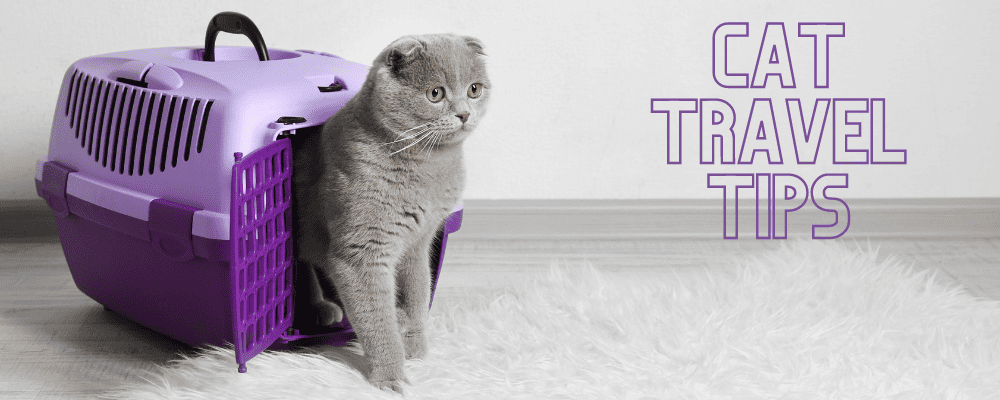So you’re planning on going on a road trip with your cat in the car? Some cats don’t like traveling to the vet let alone anywhere else. Our travel tips can make it easier.
Helping Your Cat Become Comfortable with the Carrier
- Get cats used to carriers from kittenhood. If not then, start now. Cats are most comfortable with the familiar, and need time to adjust to the unfamiliar.
- Leave the carrier in a room where your cat spends a lot of time. If it can’t be there all the time, at least sit it out a few days before the appointment.
- Place familiar bedding, treats, catnip or toys inside the carrier to encourage the cat to enter. It may take days or weeks before your cat starts to trust the carrier.
- Respect your cat’s time to become familiar with situations by being patient and calm. Reward desired behaviors.
- Make sure the carrier is level and stable while being transported
- Carry the carrier with two hands so that it is not swinging back and forth
Getting an Unwilling Cat into the Carrier
- Start by putting the carrier in a room with few hiding places. Then bring your cat to it. Move slowly and keep calm. Do not chase your cat. This can leave them even more terrified. Instead, encourage the cat with treats or toys to walk inside the carrier.
- If your cat will not walk into the carrier, top opening carriers work best for this type of situation. Gently cradle your cat and lower it into the carrier. If the carrier only opens in front, turn it on the end so the opening is at the top and lower your cat in rear legs first. Another option is to remove the top half of the carrier while getting the cat to go into the bottom half, and then calmly replace the top.
Use Calming aids
- We highly recommend using Feliway, a synthetic copy of the feline facial pheromone, used by cats to mark their territory safe and secure. Feliway is an over-the-counter product proven to help reduce or prevent feline stress and the associated behavior to challenges in the environment. You can spray Feliway on the bedding and place it in the carrier 30 minutes prior to transport. This will help comfort and reassure cats while they cope with being inside the unfamiliar carrier.
- When Feliway is not enough, ask your veterinarian if they would prescribe something to take the edge off of your cat’s anxiety. A little kitty sedation can make a big difference in stress levels for you, your cat, and the veterinary team.
Traveling
- Take your cat on short rides in the carrier to places other than the veterinarian’s office such as the bank, post office, etc. Or bring them here just for social visits!
- Travel on nearly empty stomach – to avoid car sickness and so your cat will be responsive to treats in the office
- Make sure you reward your cat!
Arriving at Animal Medical Clinic
- As a Feline Friendly Practice, Animal Medical Clinic will make every effort to help you and your cat’s visit be less stressful. If your cat gets nervous in the waiting room, let us know when you arrive and we will move you to an exam room right away. If a room is not available you can wait in your car and we will text you or come get you when we are ready.
- Bring some of your cat’s favorite treats with you, and we will give them to your cat as positive reinforcement during the exam.
Returning Back Home
Cats are very sensitive to smells. Aggressive behavior can occur when one cat senses another as a stranger. These suggestions can help avoid problems between cats following a visit to the veterinarian:
- Leave the returning cat in the carrier for a few minutes. If all cats appear to be calm and peaceful, let the returning cat out of the carrier.
- If you sense tension, keep the cat in the carrier and take it to a separate room to avoid potential injury from an upset cat. Provide food, water and a litter box for at least 24 hours until it regains more familiar smells of home.
- To avoid all conflict between other household cats, bring both cats to the veterinary practice together. This can prevent conflict as both cats will carry the scent of the clinic.
